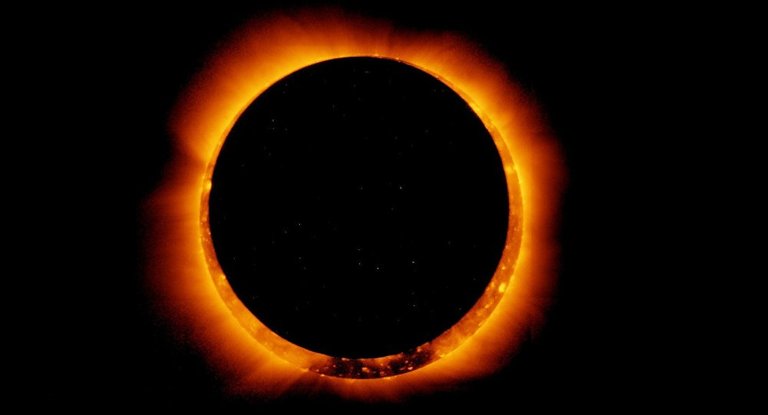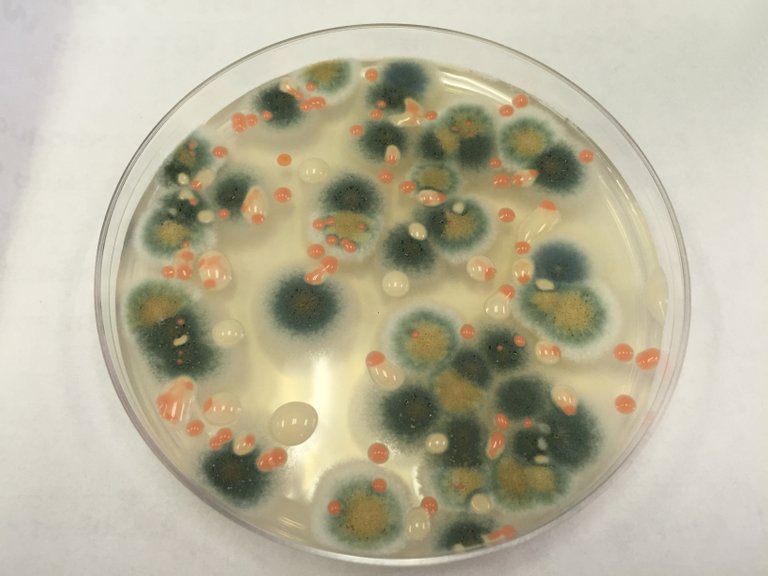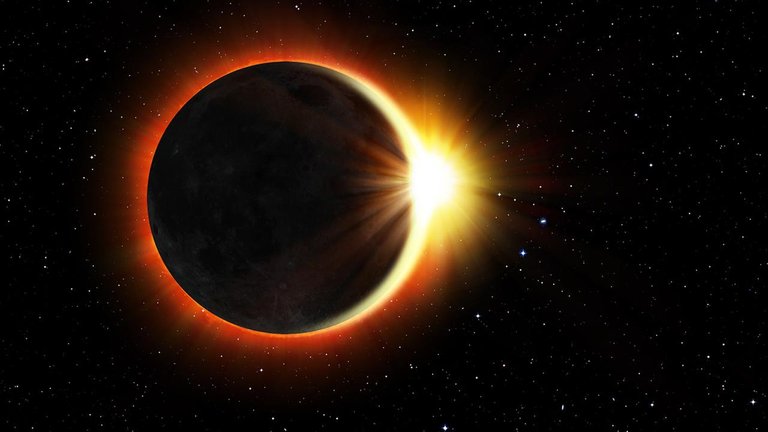
The total eclipse eclipse phenomenon will re-occur on 21 August. But for this time, the event can be seen in all regions of the United States. The opportunity is then used to transmit NASA bacteria into Earth's space layer. When an eclipse occurs, there will be about 50 balloons flown in over 20 regions in the United States.
the balloon that flown up to a height of 30 thousand meters was a NASA experiment to determine the resistance of bacteria while on Mars. Just for information, the top of the stratosphere of Earth is very similar to Mars. The reason, in the layer is very low temperatures around minus 37 degrees with very rare air and exposure to solar ultraviolet radiation. Later, the condition is more like Mars when a solar eclipse occurs.
When the eclipse, the temperature will continue to fall and the Moon will withstand some ultraviolet rays that resemble radiation in the Red Planet. Therefore, researchers will take advantage of this moment to see if the bacteria can survive on Mars. "This is truly an amazing astrobiological experiment," says NASA Director of Planetary Science Jim Green. The balloons that were launched came from a number of high schools and college students throughout the United States.
In this experiment, the researchers will use a bacterium called Paenibacillus xerothermodurans. These bacteria are known to survive in extreme conditions. In addition to bacteria, the balloon will be equipped with Raspberry Pi cameras, weather sensors, and modems to broadcast live broadcasts of the solar eclipse. Armed with the completeness, the participants will track the position of the balloon and check the condition of the bacteria.
Indirectly, this experiment can also help NASA know the possibility of other living things beyond Earth. Moreover, bacteria are elements of simple organisms that can develop into complex life.


8月21日,全食日食现象将重新出现。但在这个时候,这件事情可以在美国的所有地区看到。然后机会将NASA细菌传播到地球的空间层。当日食发生时,在美国的20多个地区将会有大约50个气球飞行。飞行高达3万米的气球是NASA在火星上确定细菌耐药性的实验。仅供参考,地球同温层的顶部与火星非常相似。原因是,在非常罕见的空气和暴露于太阳紫外线辐射的层中,极低的温度在零下37度。后来,当日食发生时,情况更像是火星。日食时,温度会持续下降,而月球将会忍受一些类似于“红色星球”辐射的紫外线。因此,研究人员将利用这一刻,看看细菌是否能在火星上生存。 NASA行星科学总监吉姆·格林(Jim Green)说:“这真的是一个令人惊奇的天体实验。发起的气球来自美国各地的一些高中和大学生。在这个实验中,研究人员将使用一种称为Paenibacillus xerothermodurans的细菌。已知这些细菌在极端条件下存活。除了细菌之外,气球还将配备有Raspberry Pi相机,天气传感器和调制解调器来播放日食的现场直播。具有完整性,参与者将跟踪气球的位置并检查细菌的状况。间接地,这个实验也可以帮助NASA知道超越地球的其他生物的可能性。此外,细菌是可以发展成复杂生活的简单生物体的元素。

Gerhana total fenomena gerhana akan kembali terjadi pada tanggal 21 Agustus. Tapi untuk kali ini, acara tersebut bisa dilihat di seluruh wilayah Amerika Serikat. Kesempatan itu kemudian digunakan untuk mentransmisikan bakteri NASA ke lapisan ruang bumi. Saat gerhana terjadi, akan ada sekitar 50 balon yang diterbangkan di lebih dari 20 wilayah di Amerika Serikat.
Balon yang diterbangkan setinggi 30 ribu meter tersebut merupakan percobaan NASA untuk mengetahui resistensi bakteri saat berada di Mars. Sekadar informasi, bagian atas stratosfer Bumi sangat mirip dengan Mars. Pasalnya, di lapisan suhu sangat rendah sekitar minus 37 derajat dengan udara yang sangat langka dan terpapar radiasi ultraviolet matahari. Nantinya, kondisinya lebih seperti Mars saat gerhana matahari terjadi.
Saat gerhana, suhu akan terus turun dan Bulan akan tahan sinar ultraviolet yang menyerupai radiasi di Planet Merah. Karena itu, peneliti akan memanfaatkan momen ini untuk melihat apakah bakteri tersebut bisa bertahan di Mars. "Ini benar-benar eksperimen astrobiologis yang menakjubkan," kata Direktur NASA Planetary Science Jim Green. Balon yang diluncurkan berasal dari sejumlah sekolah menengah dan mahasiswa di seluruh Amerika Serikat.
Dalam percobaan ini, peneliti akan menggunakan bakteri yang disebut Paenibacillus xerothermodurans. Bakteri ini dikenal bertahan dalam kondisi ekstrim. Selain bakteri, balon akan dilengkapi dengan kamera Raspberry Pi, sensor cuaca, dan modem untuk menyiarkan siaran langsung gerhana matahari. Berbekal kelengkapannya, para peserta akan melacak posisi balon dan mengecek kondisi bakteri.
Secara tidak langsung, percobaan ini juga bisa membantu NASA mengetahui kemungkinan makhluk hidup lainnya di luar Bumi. Apalagi bakteri merupakan unsur organisme sederhana yang bisa berkembang menjadi kehidupan yang kompleks.
Congratulations @mavicorp! You received a personal award!
You can view your badges on your Steem Board and compare to others on the Steem Ranking
Vote for @Steemitboard as a witness to get one more award and increased upvotes!